Aug
26
2011

Subak is a customary law community that has the characteristics of socio-religious-agriculture, which represents farmers’ associations that manage an irrigation system in paddy fields. One characteristics of the subak system is of the Tri Hita Karana concept based community management system. Recently, due to development of tourism sector, some problems occur i.e.: (i) decreasing agricultural land area, (ii) declining youth’s interest in farming system caused by the prospect of an employment opportunities to other sectors, (iii) others interest contained to water beyond agricultural sector. The main purpose of study were to identified the strengths, weaknesses, opportunities, and challenges faced by subak and to find some alternative strategies to subak development.
The assessment using the AHP results that subak development as agroecotourism zone is the alternative strategy with higher value compare to either massal tourism zone and agricultural field zone. Through the development of subak as an agroecotourism zone, this alternative can support the sustainability of subak system among Bali tourism development, which is a synergy between tourism and agriculture.
The study was conducted by Sumiyati, Lilik Soetiarso, Wayan Windia and Putu Sudira (published by: Journal Agritech Faculty of Agricultural Technology Universitas Gadjah Mada, Vol.31(2), May 2011).
Sep
16
2010
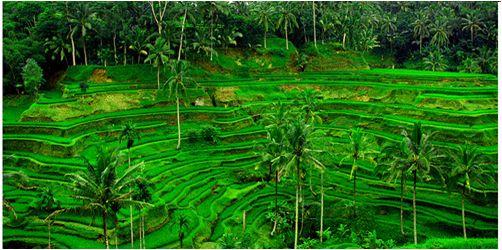
The Subak farmers’ institutional mandates that limited to only the management of irrigation systems for farming system in Bali should be again considered in line with regional development. “Agro” based integrated development became one of the alternative solutions for strengthening the Subak farmers’ institutional autonomy, namely agroecotourism system development. This model is expected to be used as a means and the media in improving the performance and management capacity building for the subak farmers’ institution. Furthermore, the farmer groups as a “subject of development centre” have very important role in the regional development that based on the “agricultural” sector. Objectives of the study are (i) for empowering and strengthening Subak as farmers institutional system that based on “good governance system”, indicated by the principle of need, effectiveness, efficiency, flexibility, benefits, equity and sustainability, (ii) to improve the farmers institutional performance, that indicated by the ability as “income generating unit”, beside as well as “socio-cultural based farmers’ institution, (iii) to provide feedback for policy makers in local government in relation to regional development strategy.
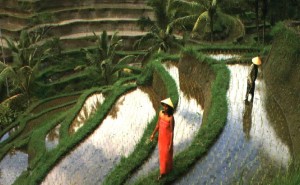 The results of this study are expected to have impacts on (1) Sustainable ecotourism, (ii) welfare of the Subak members, and (iii) Subak sustainability and its autonomy. The study is funded by KKP3T Program – Ministry of Agriculture year 2010.
The results of this study are expected to have impacts on (1) Sustainable ecotourism, (ii) welfare of the Subak members, and (iii) Subak sustainability and its autonomy. The study is funded by KKP3T Program – Ministry of Agriculture year 2010.
Mar
30
2010
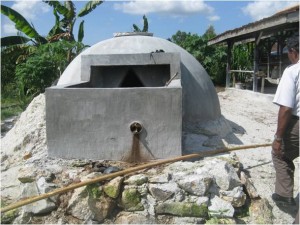
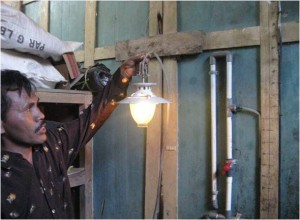
Recently, Indonesia is facing the seriously problems regarding the national agricultural development, likely: low productivity, decreased number of farming labor caused by shifting an agricultural labor to non-agricultural labor, unpredicted climate, limited energy resources in agriculture, etc. We are having some difficulties to introduce high level of agricultural technology due to characteristics of the Indonesian agricultural.
The most important issue in agriculture field, especially in the developing country is energy use and its efficiency. The “energy crisis” triggered considerable debate on the energy needs of agriculture and the efficiency with which it is used. Many now feel that the energy use for agriculture is much too high in the developed countries (European Countries) than in the developing countries, and that farming systems are therefore not sustainable. Some facts showed that the energy ratios of traditional agriculture vary from about 5 to 70 as compared with 0.1 to 5 for agriculture in industrial countries. Traditional agriculture results in food energy outputs which are extremely high in comparison with energy used in their production. Thus when considering the sustainability of farming system from the point of view of energy use, the developing countries farming system are more sustainable than the industrial countries.
Since 30 years ago, when petroleum prices began to increase dramatically, people have become more aware that liquid fossil fuel is a finite resource, and that steps to conserve the supply and improve the efficiency with which it is used are very much in order. This awareness has also led to increased interest in developing alternative sources of energy and increasing the scope of use of known sources. The dominant influence of the urban sector over the rural sector in most countries has caused the use of energy in agriculture to be singled out for special challenge. In many cases this challenge has focused on agricultural mechanization, particularly farm machinery. The relatively small share of overall commercial energy consumed by agriculture, the unquestionable need for progressively increasing agricultural output in nearly all countries of the world, and the understanding that high yield agriculture depends to a large extent on energy intensive inputs such as machinery, fertilizers and pesticides, clearly shows that agriculture deserves to be given the highest priority when allocating available commercial energy supplies in most countries.
Based on those problems, the study was focused on renewable energy. Renewable energy sources can be replenished in short period of time. The five renewable sources used most often include hydropower (water), solar, wind, geothermal and biomass. Furthermore, the matter will concentrate to one of renewable energy sources, i.e. biomass. Biomass is organic material, which has stored sunlight in the form of chemical energy. Biomass fuels include wood, wood waste, straw, manure, sugar cane, and many other byproducts from a variety of agricultural processes. In fact, biomass continues to be a major source of energy in much of the developing countries, like as Indonesia.
Bio-energy uses biomass, plant matter or animal waste to produce electrically, fuels and heat. Examples include ethanol motor fuel, landfill gas and wood burned in fireplaces and stoves. As we know, ethanol is the principle liquid fuel made from renewable resources. Use of biomass as a fuel offers some environmental advantages over fossil fuels like coal and oil, but can also have significant negative impacts on the environment. Other renewable fuels include biodiesel and hydrogen. Renewable fuel production provides jobs in rural areas while reducing dependency on imported petroleum.
Using liquid fuels from renewable biomass can actually decrease the accumulation of greenhouse gases while providing clean, efficient energy for transportation. In the future woody and herbaceous bio-energy crops could provide clean-burning fuels for a renewable fuel economy. Entrepreneurs and investors with vision and the access to appropriate technologies can tap into these abundant renewable, environmental resources. One of the principal benefits of biomass fuels is that it provides a storable transportation fuel while reducing the effects of greenhouse warming.
Indonesia as the developing country has high potential to produce bio-energy by using agricultural product waste, but an appropriate technology and supporting facilities to process it were very limited. In the future, in order to overcome the fossil energy crisis, we have to strongly develop the alternative bio-energy.
Mar
17
2010
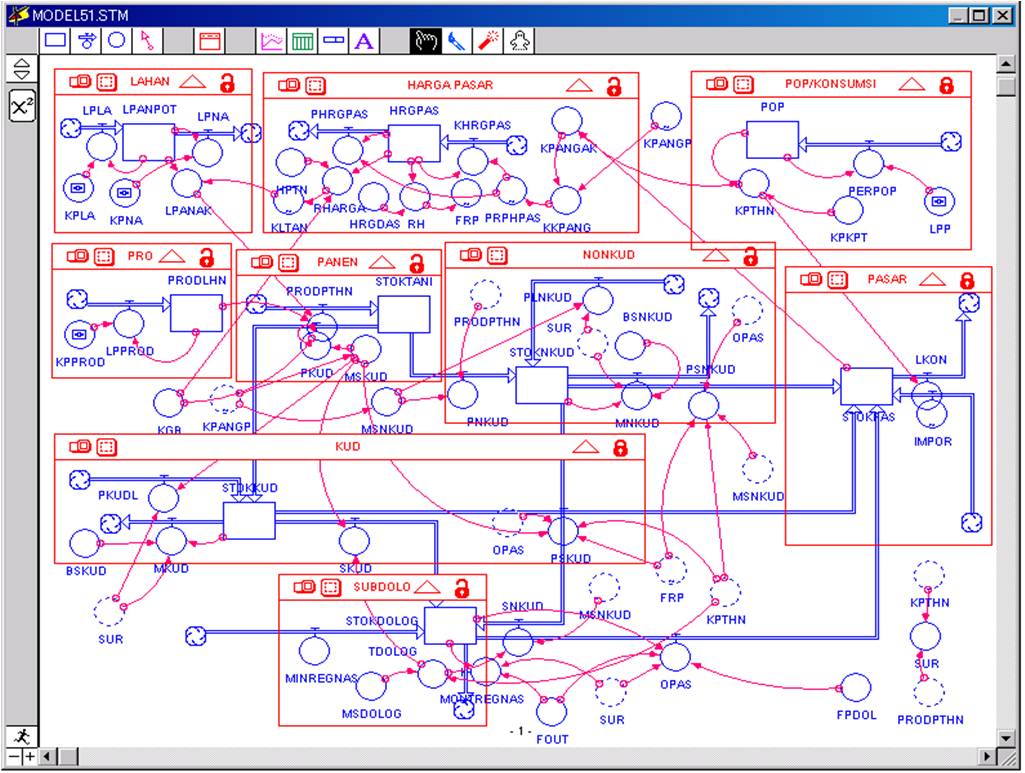 Indonesia is one of agricultural countries in the world that has significant role to endow with rich agricultural potentials. Furthermore, agricultural sector plays a big role in forming Gross National Income and also plays a role in supplying food and industrial raw materials. Refers to the Indonesian Government Policy, this sector can make an equal development through the endeavor of poverty reduction and the improvement of people’s income. The role of food supplier is to achieve food self-sufficiency. Therefore, there is a need to revitalize agriculture in a wider sense throughout Indonesia. One alternative to achieve the national target is innovating technology in agricultural production system.
Indonesia is one of agricultural countries in the world that has significant role to endow with rich agricultural potentials. Furthermore, agricultural sector plays a big role in forming Gross National Income and also plays a role in supplying food and industrial raw materials. Refers to the Indonesian Government Policy, this sector can make an equal development through the endeavor of poverty reduction and the improvement of people’s income. The role of food supplier is to achieve food self-sufficiency. Therefore, there is a need to revitalize agriculture in a wider sense throughout Indonesia. One alternative to achieve the national target is innovating technology in agricultural production system.
Related to the aforementioned, the study is focused on dynamic model development of System of Rice Intensification (SRI) for strengthening a food security in Indonesia. In general terms, the SRI is a method of increasing the yield of rice produced in farming system. This technology also improves productivity of land, labor, capital and water simultaneously. Recently, many methods of the SRI are being implemented in some countries with difference of circumstances and treatments.
Implementing the study was considered on some facts that particularly natural resources availability for agriculture will become scarce commodity in the future. Furthermore, demand for rice is increasing with population growth. Thus, any activities to increase rice productivity with less in-natural resource consumption will be important for sustainable food security. For developing the model, mechanism of the research can be described as follows; (i) identifying key variables and its behavior in the system, (ii) developing inter-relationship among key variables in the form of mathematical formulations, (iii) programming the model by using dynamic system based application software, and then simulating, (iv) validating the model to improve performance of the model.
The model was tested in some provinces, e.g. Yogyakarta, Central Java and East Java. For testing the model, three methods were compared i.e. organic SRI, inorganic SRI and conventional method. Results of the study indicated that the developed SRI model can improve significantly rice yield ranged 1.5 to 2 times compare to the conventional method.
Sep
02
2009
 Sleman, as an area with rapid economic growth, against the challenge of development in relation with population expansion, local autonomy and good governance. In one hand, there is lack of synergy among development stakeholders, on the other hand information is ineffectively used during the decision making process. This paper aimed to develop a model of rural development plan based on agricultural sector using two computer softwares, i.e: (i) Geographical Information System (GIS) as spatial information system and (ii) Powersim to program the dynamic system behavior.
Sleman, as an area with rapid economic growth, against the challenge of development in relation with population expansion, local autonomy and good governance. In one hand, there is lack of synergy among development stakeholders, on the other hand information is ineffectively used during the decision making process. This paper aimed to develop a model of rural development plan based on agricultural sector using two computer softwares, i.e: (i) Geographical Information System (GIS) as spatial information system and (ii) Powersim to program the dynamic system behavior.
The model provides information on existing condition and consists of five components namely geography, development function, infrastructure, institution, and data catalog. The model was developed through formulating causal diagrams of development sectors and set it in a dynamic programming. The model was then validated in Moyudan, Sleman for the case of agriculture development, which is showed that the model was valid. (published by : Journal of Agritech, Fac. of Agricultural Technology UGM, Vol. 25 No. 1 2005 – co-authors : Sigit Supadmo A. and Murtiningrum).






